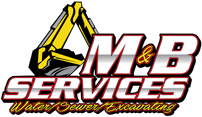
Sewer lines, like most home appliances and systems, eventually need to be replaced. These lines, however, need immediate attention. Delayed action may cause extensive damage or even health hazards.
The effects of sewer gas exposure can include nausea, headaches, dizziness, and cognitive impairment. The odor of sewer gas is distinctly unpleasant as well. Repairs are urgently needed.
Sewer lines can be repaired in several ways, each of which has its own advantages and disadvantages. In order to repair a sewer line, two main methods are used:
External Excavation
Traditional methods of sewer pipe repair have been used for years, and they are still used today.
An external sewer line excavation requires workers to dig trenches and tunnels to reach the sewer line. So the pipe can be easily repaired or replaced, the pipe will be completely exposed. But this exposes other nearby structures and causes damage.
Interior Access Excavation
This method involves precisely excavating the area where the damages are, rather than excavating large areas of the yard. It’s a way to repair sewer lines without digging large trenches.
You won’t have to spend money on repairing landscape damage once trenchless sewer line excavation is done, so it’s worth the cost. However, pipe bursting is not always possible. If the lines have been damaged too extensively, it may not be feasible to use this technique.
Reasons for Digging Up Sewer Lines
Excavating your lawn is not something you look forward to, but if you need repairs to your sewer line, you may need it. These are a few reasons for excavating:
- The existing line is damaged. This is often caused by tree roots. In addition to flushing things other than toilet paper, oil, grease, and other things can damage your sewer line. Schedule routine maintenance, like drain cleaning, to avoid costly repairs.
- You’re updating your septic system. Do you plan to move from a traditional septic system to the city’s sewer system? It might be necessary to do this if your septic tank requires repairs, or if a city bylaw requires it. If so, you’ll need a new sewer line to make the change.
- You’re constructing a new residential or commercial building. When you build a new home or business, you’ll need a new sewer line, too! A new excavation lets you put in this crucial system.
Sewer Line Excavation Process
Excavators mark all utility lines before they begin the actual excavation. You may cause a power outage and suffer serious injuries if you hit a utility line by accident. In some cases, you may even become fatally injured. Successful sewer line repairs require careful planning and attention to detail.
Your pipes will then be inspected using video technology. They can see what’s happening at a closer distance. This information allows them to choose a strategy that is optimal for your property and pipes. Plumbing repairs may require permits or inspections.
Different methods are used for different plumbing excavation processes. The following are a few examples:
Pipe Bursting vs. Open-Top Excavation
What is the best repair method for your property: trench or trenchless? There are pros and cons to each:
Pipe Bursting
Most homeowners are hesitant to repair sewer lines because they don’t want trenches dug in their yards. Although it fixes the sewer line, it ruins their lawn! Pipe bursting has the main advantage of not requiring any trenching.
Pneumatic or hydraulic heads were used to remove old and broken pipes. During the replacement process, we remove the old damaged pipe and replace it with a new one that is precisely sized to fit the space.
We also offer cured-in-place pipe lining (also known as trenchless sewer line repair in Minneapolis and St. Paul). This method involves lining your existing pipes with epoxy. You won’t need to remove the old pipes; they’ll function just as effectively as a new sewer line once they’re relined.
The use of these repair methods is relatively recent, having only existed for about two decades. Due to the lack of digging, costs are minimized in terms of labor as well as how much you have to spend to fix your property afterward.
Open-Top Excavation
There is an alternative method where trenchless sewer line repair isn’t feasible:
The open-top excavation of your sewer line is time-consuming and labor-intensive, but it ensures a thorough repair. It is necessary to dig holes on both sides of the pipe, as well as around it. It requires a large portion of your yard to be dug up, as you can imagine.
After the pipes have been uncovered, repairs can begin. The sewer line will be accessible for the workers, regardless of whether the line needs to be completely replaced or adjusted.
A trenchless repair is usually more expensive than an open-top excavation. You can repair or replace a sewer line with this method. However, there are disadvantages to this method, such as the time and cost associated with repairing your yard.
Conclusion
Most home and business owners will encounter a damaged sewer line at some point or another. Minimizing damage or exposing yourself to hazards requires a prompt replacement.
Wondering which of these repair methods are best for your property? We can help!
M & B Services provides a range of sewer line repair methods, including pipe bursting and pipe lining, in Minneapolis and St. Paul. We can help you determine the most appropriate excavation method for the repair of your sewer line by contacting us today.
